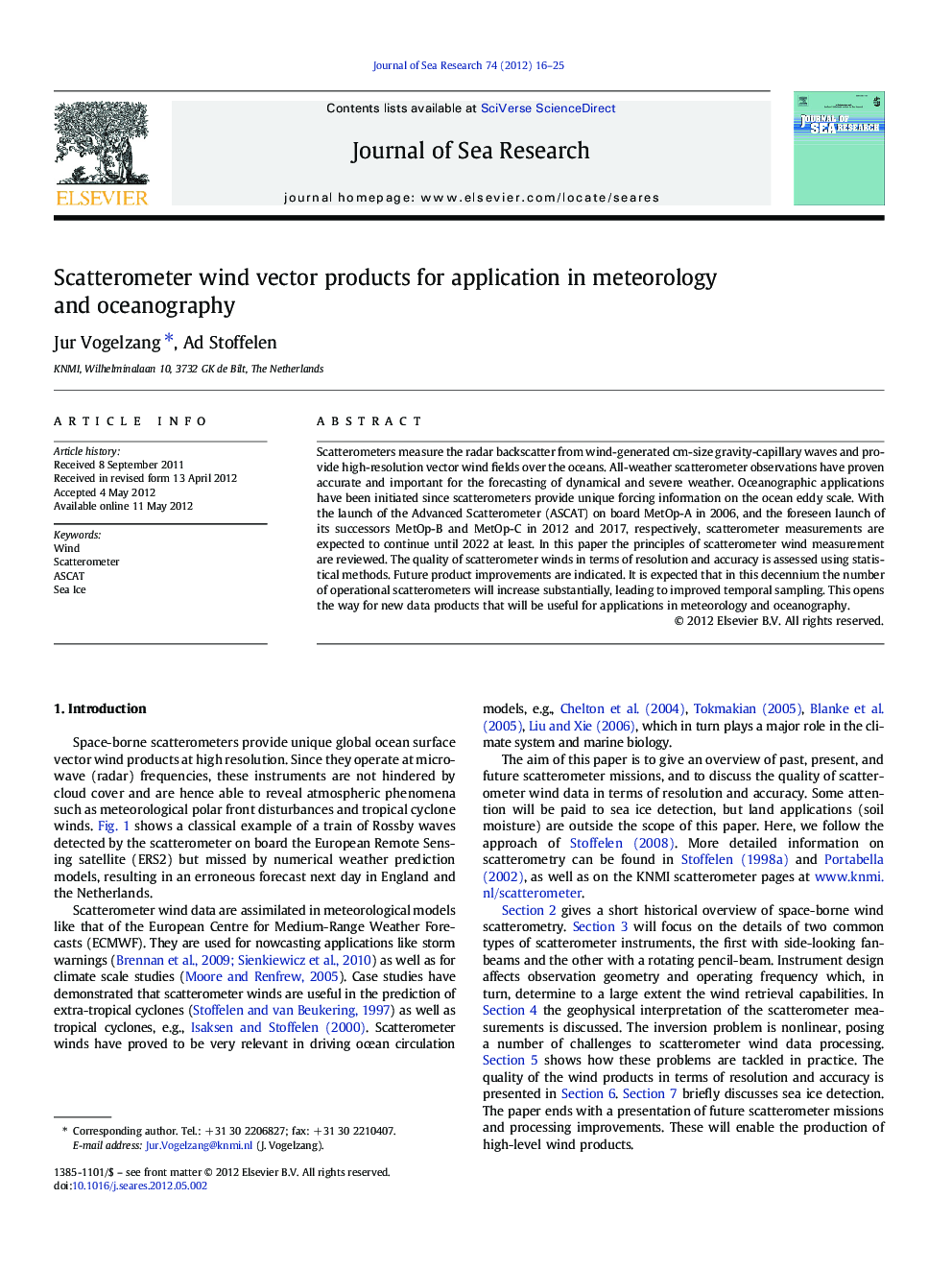| Article ID | Journal | Published Year | Pages | File Type |
|---|---|---|---|---|
| 4549990 | Journal of Sea Research | 2012 | 10 Pages |
Scatterometers measure the radar backscatter from wind-generated cm-size gravity-capillary waves and provide high-resolution vector wind fields over the oceans. All-weather scatterometer observations have proven accurate and important for the forecasting of dynamical and severe weather. Oceanographic applications have been initiated since scatterometers provide unique forcing information on the ocean eddy scale. With the launch of the Advanced Scatterometer (ASCAT) on board MetOp-A in 2006, and the foreseen launch of its successors MetOp-B and MetOp-C in 2012 and 2017, respectively, scatterometer measurements are expected to continue until 2022 at least. In this paper the principles of scatterometer wind measurement are reviewed. The quality of scatterometer winds in terms of resolution and accuracy is assessed using statistical methods. Future product improvements are indicated. It is expected that in this decennium the number of operational scatterometers will increase substantially, leading to improved temporal sampling. This opens the way for new data products that will be useful for applications in meteorology and oceanography.
► Spaceborne scatterometers provide accurate and detailed ocean surface vector wind. ► Scatterometer wind products will be further improved in the near future. ► The advent of more scatterometers in the future will improve temporal resolution. ► Better temporal resolution opens the way to support mesoscale modeling.
